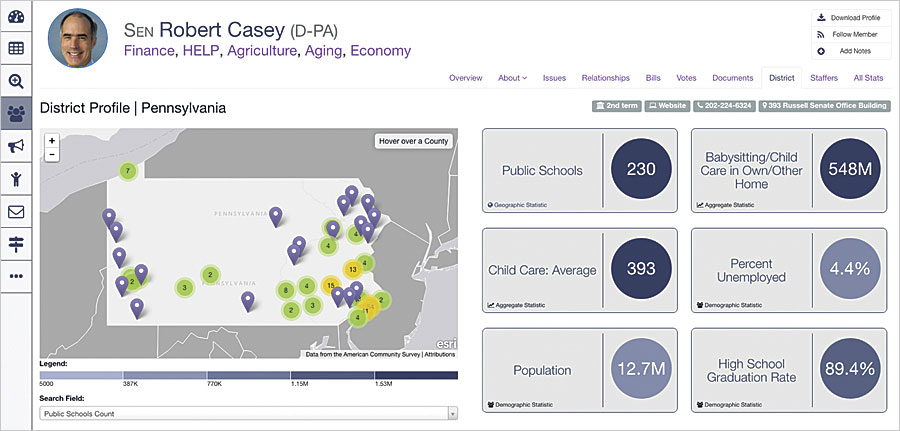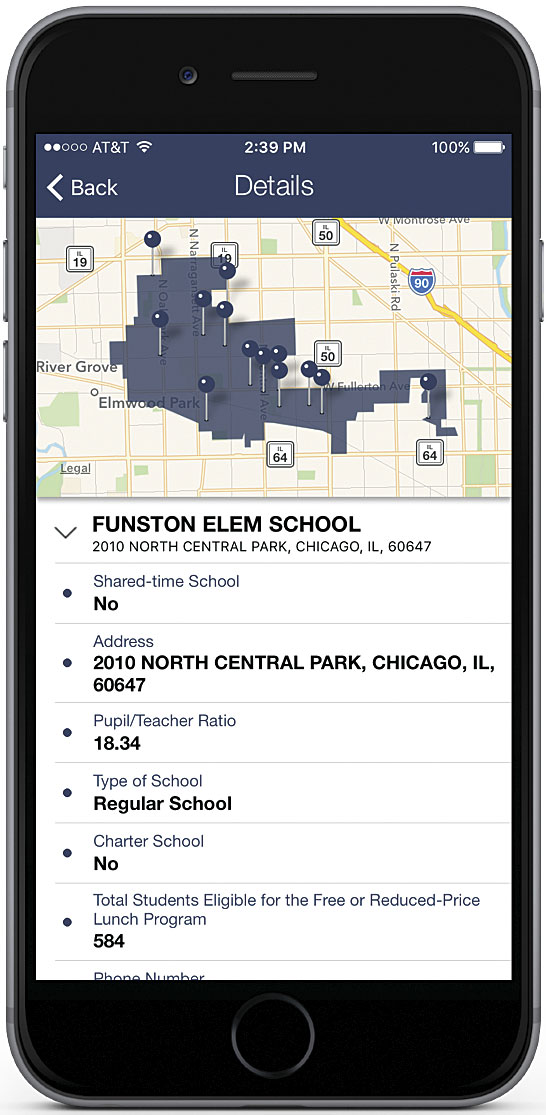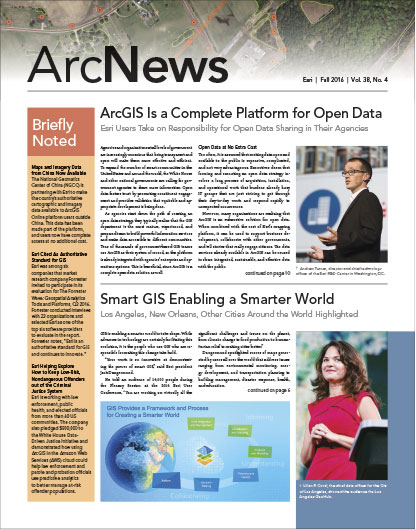
On November 8, in addition to choosing a new president, Americans will elect or reelect 34 senators and all 435 representatives to Congress. They will also choose 5,920 state government officials and vote for more than 10,000 local legislators across the United States. Once in office, these lawmakers will represent the residents in their constituencies, whether at the federal, state, or local level.
Getting laws passed in any government entails working with other legislators. If, for example, a senator wants to propose a bill to help low-income families get access to better childcare, he or she needs to garner support from other members of Congress to get the measure through both the Senate and the House, to the president, and signed into law.
The most logical lawmakers to target, then, are ones who have constituents in their jurisdictions with similar needs—so, concentrations of low-income families that have at least one working adult in the household. It is also efficient to approach legislators who tend to support causes like this. But finding this information is difficult, and keeping track of it for hundreds of politicians is arduous.
Quorum Analytics, an Esri startup partner, has developed tracking software that it employs in conjunction with GIS to make gleaning political influence a lot easier. Although the company began its business using another mapping software, it switched to Esri after a year and a half to gain access to better geographic datasets, as well as a market of organizations that already store geographic data. Now, with Quorum’s online and mobile apps, lawmakers (and their staffs) can seek out senators and representatives who will support their issues, cosponsor legislation, and help get bills passed. The technology also extends this ability to trade associations, government agencies, nonprofits, startups, lobby shops, and Fortune 500 companies.
Identifying Targets
Traditionally, legislative targeting has relied on advocacy professionals’ intuition and experience to identify targets. Quorum’s platform reinvents this process by enabling users to consider various quantitative factors such as committee and caucus membership, legislative activity, votes, mentions of key subjects in press releases and on social media, and demographics.
Through Quorum’s web and mobile apps, users can track legislation and dialog in Washington, DC, and all 50 states and leverage these quantitative analytics to identify potential champions for a cause. Users get access to three main types of datasets at the federal, state, and local levels: legislative data, including bills, votes, committees, and hearing schedules; public remarks, including press releases, Tweets, Facebook posts, floor statements, and emails to constituents; and contact information for legislators, staffers, and executives.

From this constantly updating stream of information, Quorum generates sophisticated analytics that enable users to understand which state legislators or members of Congress are most active, influential, or effective in a given issue area and identify relationships among lawmakers to help build coalitions. The software also calls out similarities in the texts of bills from different states.
Users can then leverage their preexisting geographic datasets—along with the expansive demographic datasets hosted in ArcGIS—to view Quorum’s legislative data and analytics in map form. The software employs the ArcGIS REST API for the GeoEnrichment service, which makes it easy for Quorum users to layer in extensive demographic statistics—such as age, race, industry, and consumer preferences—about each lawmaker’s constituents. With this, users can visualize a proposed policy’s effects on various districts and identify legislative targets.
Demonstrating Impact
Once users have identified their targets, they can use Quorum to generate comprehensive profiles that help demonstrate the value of their advocacy issues to lawmakers. Even without technical knowledge, users can directly import geographic data from ArcGIS and visualize it in Quorum’s platform.
This helped a major nonprofit recently identify lawmakers whose jurisdictions would be most affected by legislation aimed at curbing child poverty. Its employees used Esri’s demographic data to rank districts by different child poverty statistics—such as the percentage of people below the poverty line who are under age 18 and the percentage of households below the poverty line that have at least one child under age five—and compared that to Quorum’s trove of legislative data. Using Quorum’s targeting tools, it took the nonprofit hours rather than days to come up with a list of lawmakers who would most likely support a bill on the issue. From there, the nonprofit convinced several lawmakers, who previously had been unaware of the extent of child poverty in their districts, to cosponsor a bill.
Quorum’s simple interface also helped a Fortune 500 company in the retail space visualize its consumer and economic impact in various regions. After running the analytics, the company could see how many people it employed in each state and district, where each of its facilities was located, its total charitable donations, and how much the company was contributing to the economy. The company then used Quorum to distribute this information to its public relations employees and contractors in all 50 states, providing them with an unprecedented level of insight into their company’s economic influence.
Communicating with Lawmakers
To see a government or public affairs project through, policy proposers need to be able to communicate directly with lawmakers, their staff, and executives.
Quorum has a full-featured customer relationship management (CRM) system to help users keep track of their relationships. It makes it easy to send personalized emails—complete with customized datasets and maps—to interested parties (even on a mass scale), right from within the software, so lawmakers can visualize the effects of suggested legislation.
This geographically driven insight is available through Quorum’s mobile app as well, so users can show their data to anyone at meetings or political events. And the ability to generate professionally designed PDFs makes it easy to leave printouts with interested parties when meetings conclude.
Together with Esri, Quorum is transforming how government affairs professionals work with policy makers and how legislators work with each other.
“Quorum harnesses congressional data in the blink of an eye,” said Maggie Williams, director of the Institute of Politics at Harvard University. “It is a window into the world of lawmaking, corralling volumes of legislative information into a readable, manageable form.”
“Quorum is an amazing and powerful tool exploring the intersection of elections and policy,” echoed Charlie Cook, editor and publisher of The Cook Political Report. “Even the smartest and most experienced lobbyists and Congress watchers will find that Quorum’s fascinating data will help them understand and anticipate the behavior of members.”
Get more information and sign up for free weekly email alerts to see every time your organization is mentioned by US lawmakers.

